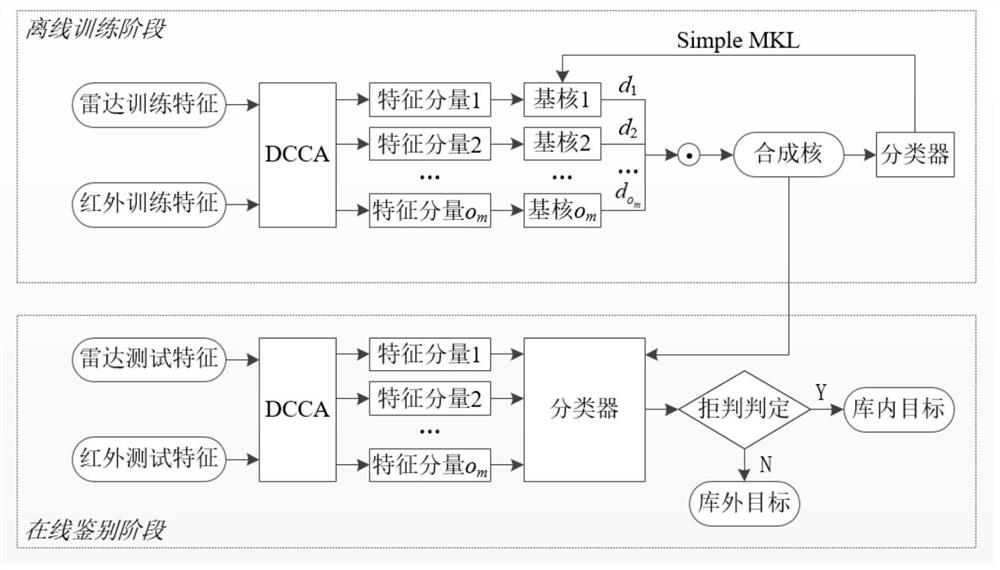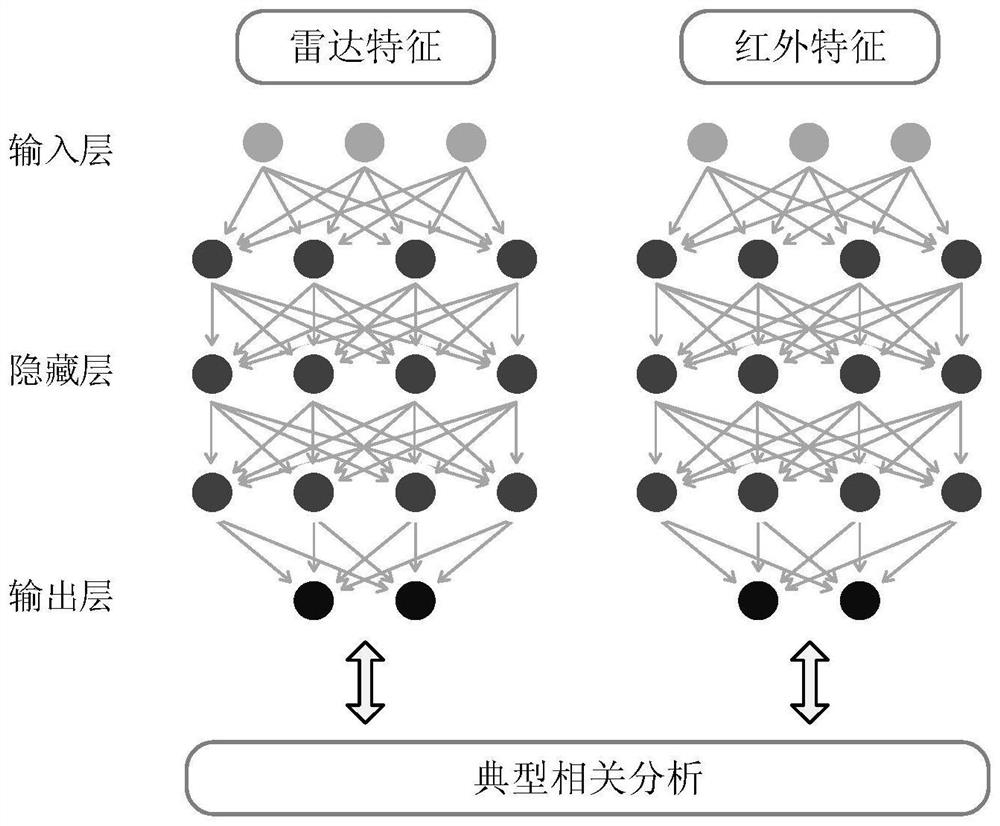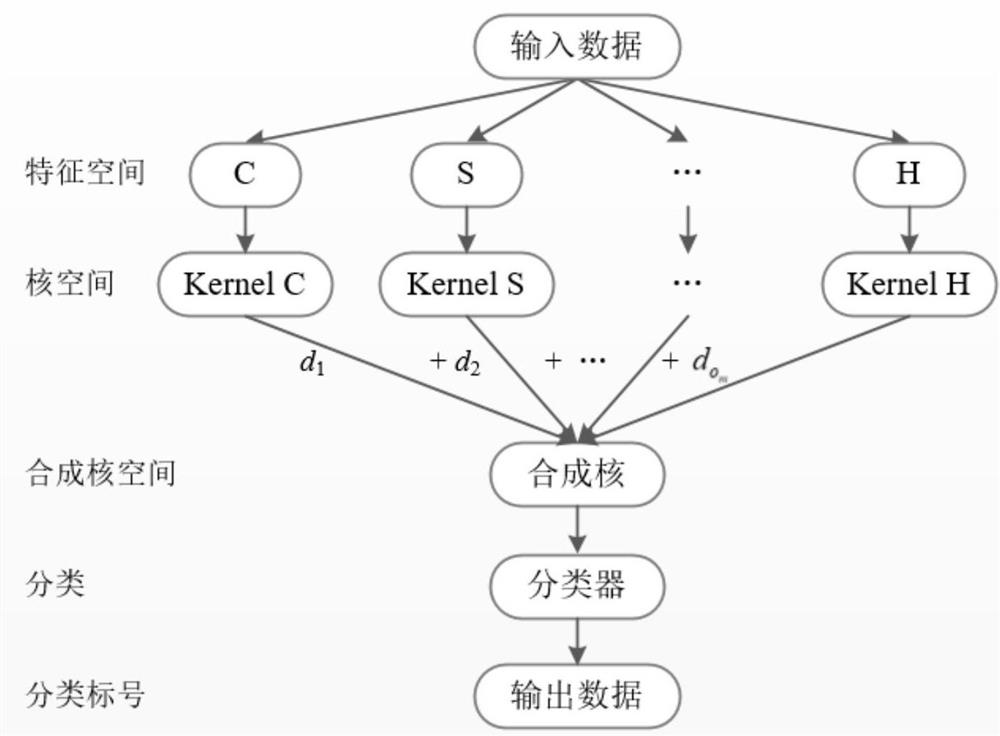Feature fusion method based on multi-kernel learning
A technology of multi-core learning and feature fusion, which is applied in the field of feature fusion based on multi-core learning, and can solve the problems of limited feature separability and reduced feature dimension.
- Summary
- Abstract
- Description
- Claims
- Application Information
AI Technical Summary
Problems solved by technology
Method used
Image
Examples
Embodiment Construction
[0110] Embodiments of the present invention will be described in detail below in conjunction with examples, but those skilled in the art will understand that the following examples are only used to illustrate the present invention, and should not be considered as limiting the scope of the present invention.
[0111] refer to figure 1 , a feature fusion method based on multi-kernel learning, including the following steps:
[0112] Step 1, the radar training feature set {x 1 ,x 2 ,...,x i ,...,x m}(x i ∈R, 1≤i≤m) and the infrared training feature set {y 1 ,y 2 ,...,y j ,...,y n}(y j ∈R, 1≤j≤n) are standardized respectively to obtain a standardized radar training feature set X and a standardized infrared training feature set Y; where m is the dimension of the radar feature, n is the dimension of the infrared feature, and R is a real number set.
[0113] Specifically, step 1 is:
[0114] The radar training feature set {x 1 ,x 2 ,...,x i ,...,x m}(x i ∈R, 1≤i≤m) an...
PUM
 Login to View More
Login to View More Abstract
Description
Claims
Application Information
 Login to View More
Login to View More - R&D
- Intellectual Property
- Life Sciences
- Materials
- Tech Scout
- Unparalleled Data Quality
- Higher Quality Content
- 60% Fewer Hallucinations
Browse by: Latest US Patents, China's latest patents, Technical Efficacy Thesaurus, Application Domain, Technology Topic, Popular Technical Reports.
© 2025 PatSnap. All rights reserved.Legal|Privacy policy|Modern Slavery Act Transparency Statement|Sitemap|About US| Contact US: help@patsnap.com



